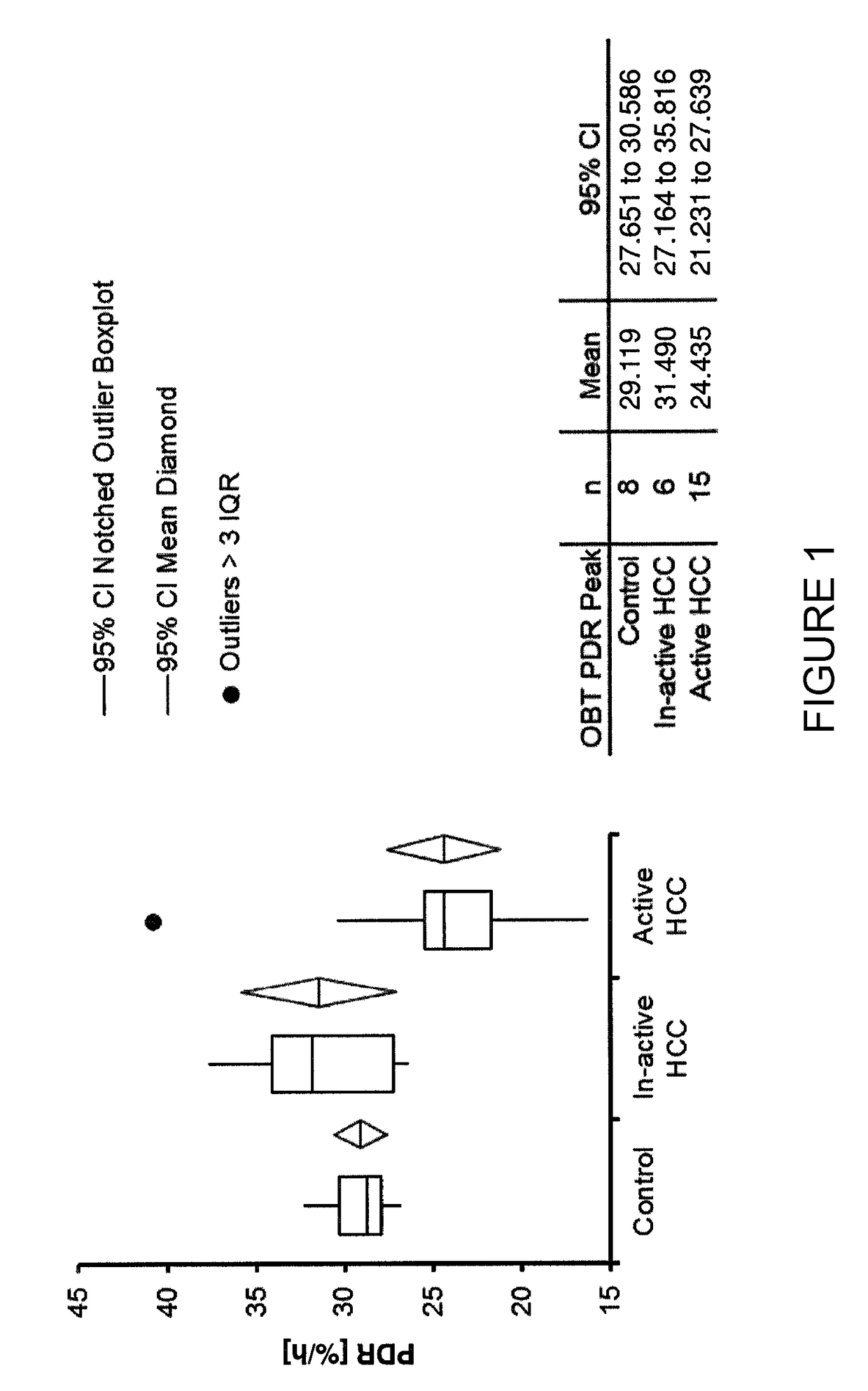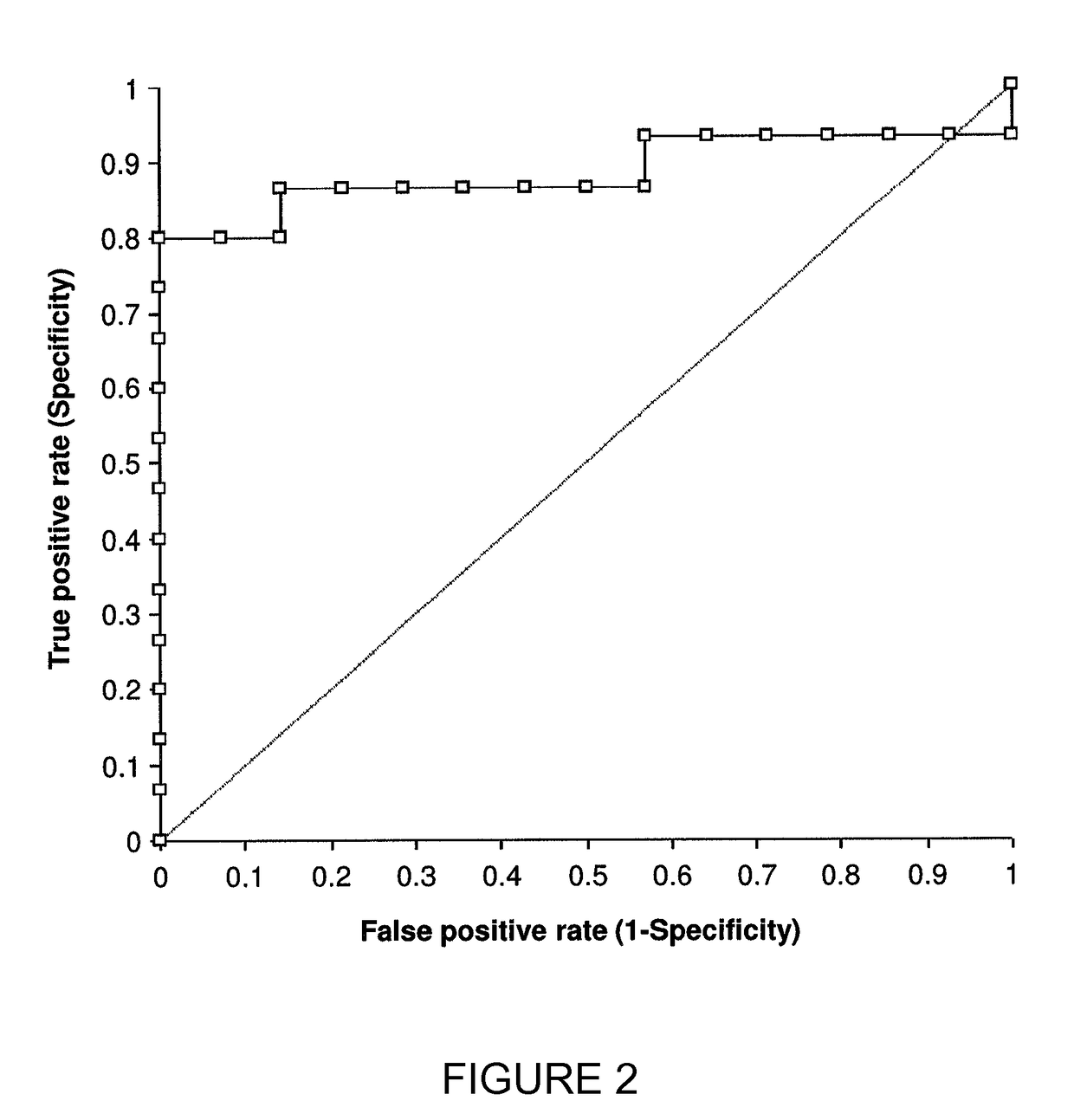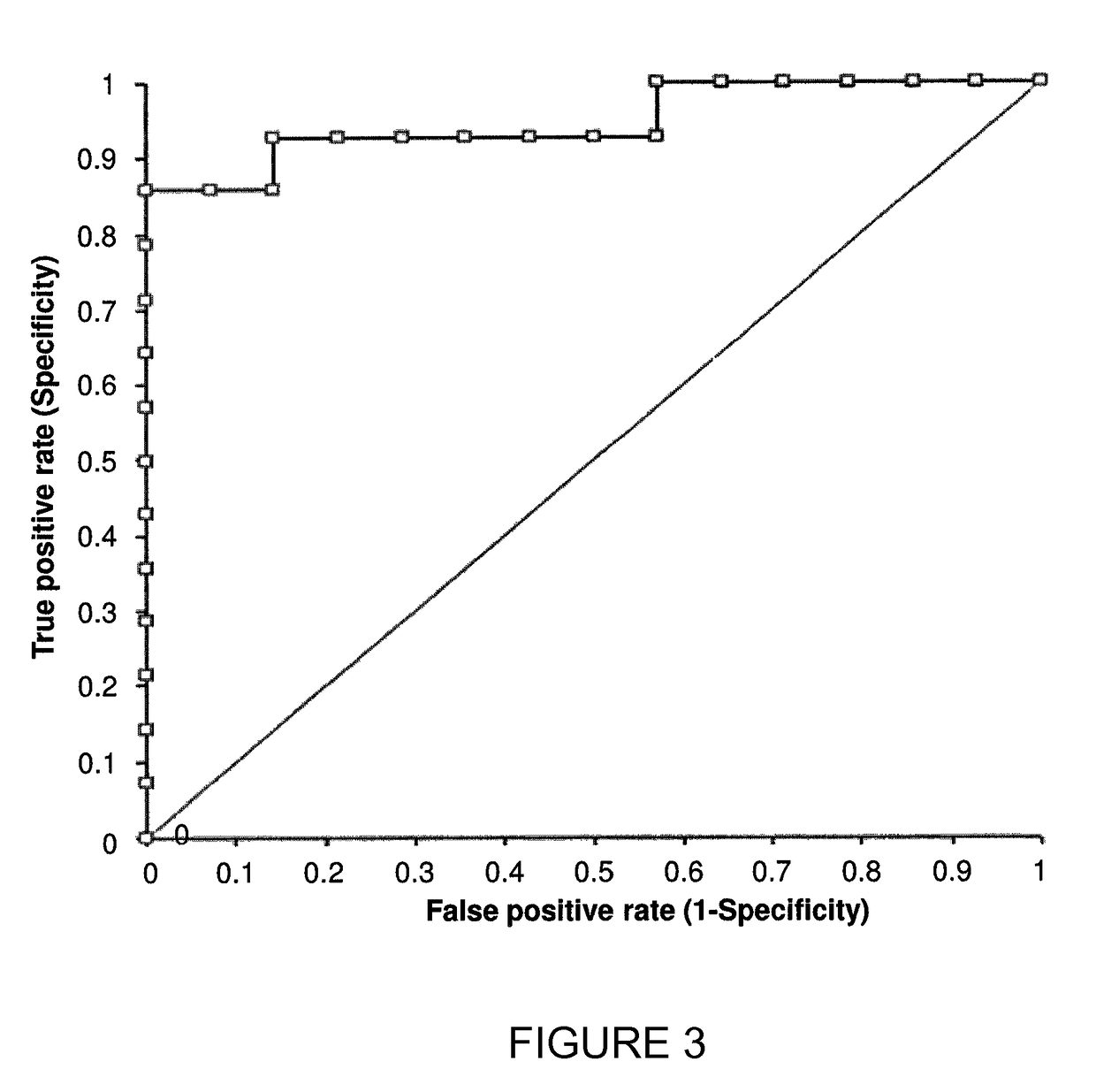Method for detection of hepatocellar carcinoma (HCC) using an octanoate breath test
a technology of octanoate and breath test, which is applied in the field of methods, can solve the problems of hcc being a major health problem, hcc being a risk factor for the development of hcc, and nash being a risk factor for hcc, so as to minimize the length and variation of the tes
- Summary
- Abstract
- Description
- Claims
- Application Information
AI Technical Summary
Benefits of technology
Problems solved by technology
Method used
Image
Examples
example 1
13C-Octanoate Breath Test Values in Active Vs. Inactive HCC and Control
[0164]Patients with active or inactive HCC (after successful therapy) were recruited. The degree of activity was determined based on injection of contrast media (Lipiodol®) under CT and / or MRI. In addition, cirrhotic patients without any evidence of HCC were also recruited (used as a control group). Information about the study population is provided in Tables 1, 2 and 3 hereinbelow.
[0165]
TABLE 1GenderActive HCCInactive HCCControlGrand TotalF43411M113418Grand Total156829
[0166]
TABLE 2EtiologyActive HCCInactive HCCControlGrand TotalCryptogenic 2*1—3HBV2114HCV73616NASH41—5Sarcoidosis—11Grand Total15 6829*One male patient was on Nexavar ™ (sorafenib) treatment before doing OBT.
[0167]
TABLE 3AFP levelsHCC StatusMinimumMaximumMedianMeanControl1.4233.303.407.39Inactive HCC4.6031.906.2812.27Active HCC3.995990.0057.70652.08
[0168]All patients have undergone dynamic 13C-octanoate breath test (OBT) using BreathID® device (Exal...
example 2
PDR Curves
[0207]Additional 13C-octanoate breath tests (OBT) were carried out and their results are shown in FIGS. 5-9. The tests were performed according to the procedure described in Example 1 above.
[0208]FIG. 5 shows an OBT PDR curve of a typical cirrhotic patient without liver cancer. The PDR peak is reached within 30 minutes and is relatively high (˜30 % / h).
[0209]FIG. 6 shows an OBT PDR curve of a typical cirrhotic patient with liver cancer. The PDR peak is delayed (after 30 minutes) and is typically low.
[0210]FIG. 7 shows PDR curves of three consecutive OBTs of a typical cirrhotic patient with liver cancer. All curves are low. Although TACE treatment showed some improvement in curve no. 2 (“2nd OBT treatment after partially successful treatment”) the relapse of HCC can be clearly seen on the 3rd curve (“3rd OBT 1 month after previous test shows relapse of HCC”).
[0211]FIG. 8 shows PDR curves of three consecutive OBTs of a typical cirrhotic patient with liver cancer who had a suc...
PUM
| Property | Measurement | Unit |
|---|---|---|
| weight | aaaaa | aaaaa |
| weight | aaaaa | aaaaa |
| body weight | aaaaa | aaaaa |
Abstract
Description
Claims
Application Information
 Login to View More
Login to View More - R&D
- Intellectual Property
- Life Sciences
- Materials
- Tech Scout
- Unparalleled Data Quality
- Higher Quality Content
- 60% Fewer Hallucinations
Browse by: Latest US Patents, China's latest patents, Technical Efficacy Thesaurus, Application Domain, Technology Topic, Popular Technical Reports.
© 2025 PatSnap. All rights reserved.Legal|Privacy policy|Modern Slavery Act Transparency Statement|Sitemap|About US| Contact US: help@patsnap.com



